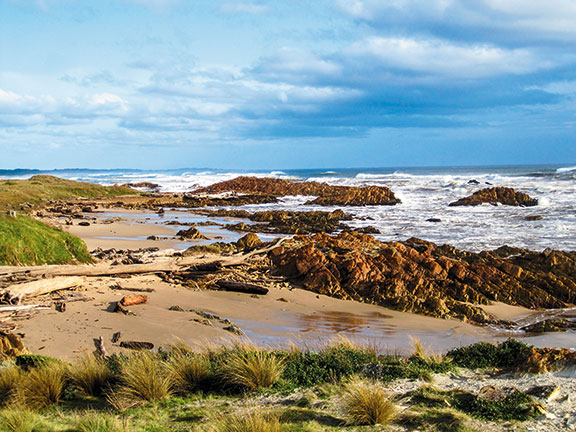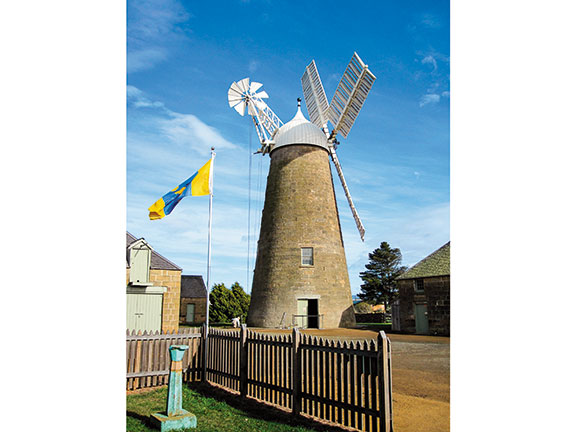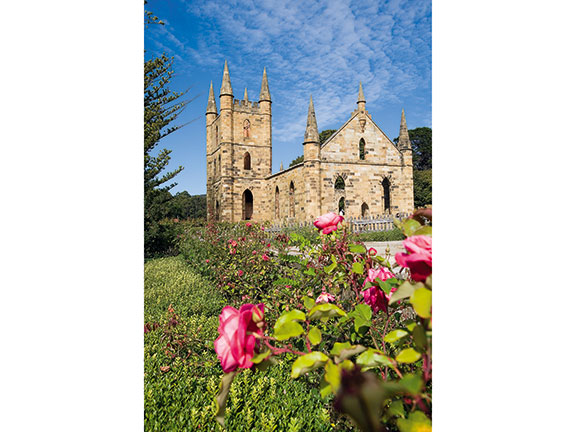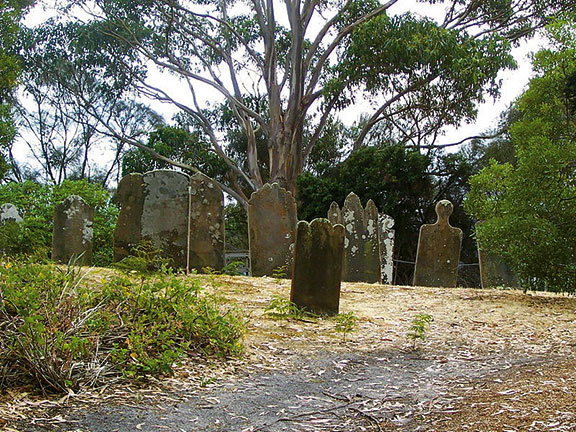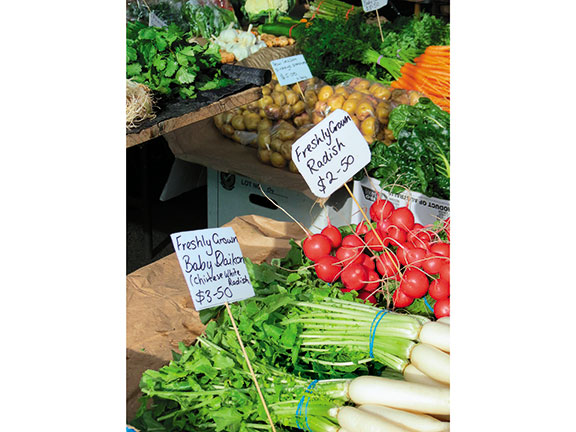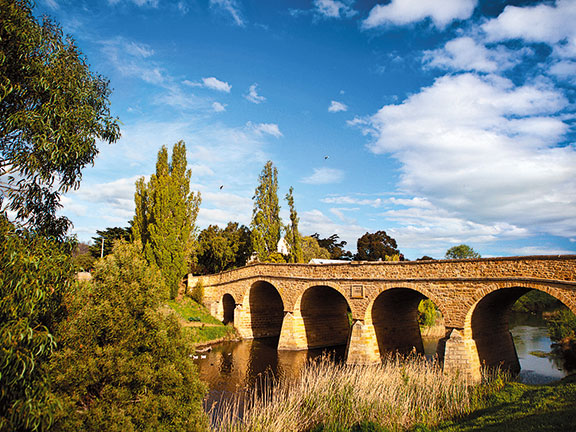It's not surprising that the island of Tasmania is shaped like a heart. There's a lot to love about Australia's smallest state — and it's a perfect place for motorhoming, with miles of coastline studded by stunning beachesm, a rich colonial history and fabulous food.
More than a 45% of the state is either world heritage listed, a reserve, or a national park, and the World Heritage area — which covers around 20% of the state — is one of the largest temperate wilderness areas in the world.
Tasmania packs a lot into a small space. It is just 364 kilometres from northern-most tip to southern-most toe, and only 306 kilometres wide. But don't be fooled into thinking you can get around and see it all in just a few days. Tasmania is a place to return to again and again.
While I have made New Zealand my home since 1985, I try to return to Tassie as often as possible to catch up with family and friends. Each time I aim to take on another region to refresh myself. This time, with the use for five days of a four-berth motorhome courtesy of thl and Britz, I focused on Hobart and its surrounds. Day trips included jaunts to areas within two hours' of the capital city.
My intention this time was to absorb as much as possible of the early colonial history and architecture that is so readily accessible in Tasmania (which was first colonised as a penal settlement in 1803, although aboriginal remains estimated to be up to 20,000 years old have been found).
Opportunities for circuitous day trips from Hobart abound. Take the coastal route past Wrest Point Casino to the Shot Tower and Kingston. From the fishing village of Kettering you can board a ferry to magnificent Bruny Island for a stopover. Indulge in locally-made cheese and wine, magnificent scenery and award-winning adventure tourism, or continue on down the D'Entrecastreaux Channel to dine in fine style at Peppermint Bay, Woodbridge. Continue on to take a stroll around Cygnet and either take the coastal route through Petchey's Bay and Lymington to Huonville, or stick to the main route through cherry and apple orchards, and back to Hobart.
For first-time visitors, Tasmania's most important heritage town is situated less than 15 minutes from either the city or the airport. The streets of Richmond are lined with beautifully restored sandstone buildings. They provide a fascinating glimpse of life in the early 1800s.
The Richmond Bridge, built by convicts in 1823, is the oldest bridge still in use in Australia. It's the perfect setting to park and enjoy a picnic on the grassy river bank while absorbing the beauty of the surrounding township. Afterwards take a stroll up the gentle rise, past quaint cottages and Georgian mansions to cafés, shops, galleries and attractions — the majority of which are housed in carefully restored buildings. Highlights include the Richmond gaol (c1825) which is open daily, Oak House (c1830) — largely unmodified and owned until recently by three elderly spinster sisters — which is currently undergoing restoration, St Luke's Anglican Church (c1834) and St John's Catholic Church and cemetery (c1837).
A must see attraction in Richmond is a visit to Old Hobart Town, a model village and miniature replica of Hobart in the 1820s, designed and built from historical plans. Shopping is recommended generally, but also specifically, at Saddlers Court Gallery for exceptional quality art and crafts, The Woodcraft Shop for fine Tasmanian timbers, and Exquisite Style for unique handmade jewellery to suit all tastes.
If you're planning to also shop in Hobart, or stock up for a road trip, make sure you allow at least half of a Saturday to spend at Salamanca Market, where 300 stallholders sell Tasmanian craft, collectibles (Henry Pumpworth), antiques, silks (Get Stuff), accessories and jewellery (Cas Charles), and homemade specialties, or homegrown vegetables of superior quality (The Vietnamese family Hmong). This bustling market has been an institution since the 1970s. Each Saturday, thousands of visitors jostle their way among the colourful stalls sprawled the length of the broad street between the bleached façades of sandstone warehouses (now housing restaurants, shops and galleries) and the plane trees lining the open wharves.
This spectacular location is a destination in itself. Allow plenty of time to explore. Wander at leisure around historic Battery Point or enjoy a late lunch at one of the many seafood restaurants on the piers. The Upper Deck of Mures on Constitution Dock is a great place to admire at close hand character vessels and the working fishing fleet. Stroll across the dock bridge to the old Henry Jones Jam factory for more shops and restaurants, or take in the recently-renovated Tasmanian Museum and Art Gallery, or nearby Maritime Museum.
If you love art and you don't mind the unconventional, MONA — Hobart's Museum of Old and New Art — is a must see. Take a dedicated ferry from the central wharf to the extraordinary riverfront building housing MONA, or drive about 15 minutes north from the city along the Brooker Highway. There's plenty of parking nearby, a fabulous café and award-winning restaurant, as well a brewery and vineyard on site.
MONA is privately owned and free to the public. It houses the personal and eclectic artworks and artifacts amassed by Hobart-born David Walsh, reputed to be the world's richest gambler. Walsh's tastes run from the astounding to the bizarre and you will be treated to the full gamut from Egyptian mummies to a machine that mimics the human digestive system. It's brilliant and Walsh has done an exceptional job of reinvigorating the visitor experience.
Continuing west along the Derwent River, charming New Norfolk is the next major township. There's a waterfront campground here and it's a good base from which to explore further upriver the historic Salmon Ponds fishery, Mount Field National Park — where you might be lucky enough to spy a platypus frolicking in a tarn — or as a stopover en route to the scenic delights of the wild, west coast. New Norfolk was once infamously associated with the lunatic asylum around which it was built. These days, visitors can stroll around the attractive grounds, enjoy coffee or craft, and buy antiques or vintage goods from Willow Court Antiques — one of my all-time favourite places to fossick and shop.
Cross the bridge at this point and return to Hobart on the other side of the river for a different perspective or go along the recommended Midland's Highway route north. If you're looking for just a taste of towns along the Midland's, don't miss Oatlands, 84 kilometres north of Hobart. Oatlands is the largest town along this highway and thought to have the greatest number of colonial sandstone buildings (many of them convict built) in Australia.
The village is surrounded by rolling farmland and was once a grain basket for the region. Callington Mill was built in 1837. The sails were rebuilt and the building restored to full working condition in 2010. Mill tours are recommended, as is its bakery café on the main street where specialty breads and bread-making equipment can also be found. Good, dedicated RV parking is to be had along the edge of the lake close by. Oatlands is a wonderful place to explore on foot, and hours could easily be spent poking in and out of shops and at the numerous places to relax over good food or coffee.
We returned to Hobart from Oatlands via Campania, which offered not only good roads with little traffic through rolling countryside but also a glimpse of many fine old buildings dotted along the road, and in the distance. It was easy to turn back time on this enjoyable back route and I am glad we took this diversion to Sorrell — a great base to stock up for trips up the east coast or down to the peninsula and the penal colony at Port Arthur.
I had wanted to return to Port Arthur for many years. This time, thanks to the genealogical research undertaken by my daughter, I was on a mission to take the short boat ride and guided tour to the morbidly named Isle of the Dead, to see some family graves.
After several hours wandering happily alone through both the ruins and the beautifully restored buildings of Port Arthur, I boarded the fast ferry for the island and the 40-minute tour. Commentary on both was interesting, informative and exceptionally well-delivered by our two guides. I mentioned I was looking for family graves and was afforded the rare privilege of stepping behind the rope barriers to stand quietly in front of the grave — purportedly the last resting place of my paternal great, great-grandmother Elizabeth, whose husband Francis was a private with the 96th regiment. Francis left Plymouth, England, in 1841 aboard the HMS Tortoise to accompany around 400 convicts bound for Port Arthur. Five years later Elizabeth and Francis were predeceased by the first of three children whose names are etched in stone for perpetuity. However, a mystery surrounds the whereabouts of the remains of Elizabeth. It is assumed an exception was made for her to be illegally interred on the island with her children, John Thomas, aged two years and six months, Julia, aged five months, and George aged 18 years and eight months.
When people refer to Tasmania, jokes about interbreeding abound. It remains true that Tasmania is the most homogenous of the Australian states with more than 65 percent of its residents descended from the 10,000 or so settler families. I was chatting with our guide, John Reardon, on the ferry as we returned to Port Arthur. It turns out we're related.
But don't let exaggerated and outmoded perceptions of Tasmania put you off visiting. Contemporary Tasmania is an up-to-the-minute tourist destination that will exceed your expectations of natural beauty, haute cuisine, art and history. No matter what time of the year you choose to visit, Tasmania will warm the cockles of your heart.
For the latest reviews, subscribe to our Motorhomes, Caravans & Destinations magazine here.

